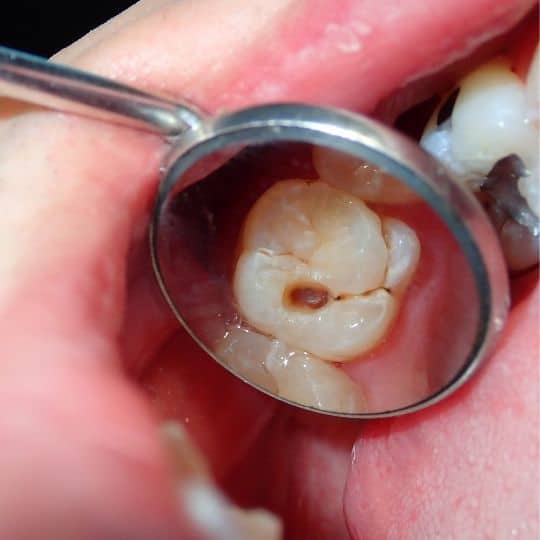For many, conquering opioid addiction marks a vital and demanding phase in their lives. Medication-assisted treatment (MAT) programs, often utilizing Suboxone, have emerged as a powerful tool in this fight.
However, a recent and concerning correlation has come to light, casting a shadow over this seemingly straightforward path to recovery. Research suggests a potential link between Suboxone use and an alarming rise in tooth decay among patients.
In this blog post, we will delve into this unexpected connection, exploring the established role of Suboxone in opioid dependence treatment while simultaneously examining studies highlighting a potential downside.
Understanding Suboxone

In the year 2022, there were more than 100,000 fatalities attributed to drug overdoses. The growing dependence on drugs, especially opioids, called for urgent mitigation.
Suboxone, a medication administered by healthcare providers, plays a crucial role in medication-assisted therapy (MAT) programs aimed at managing opioid dependency. Suboxone tackles opioid dependence with a double-barreled approach.
Buprenorphine, a partial opioid agonist, mimics certain opioid effects to alleviate cravings, while naloxone, an opioid antagonist, blocks the effects of other opioids to deter misuse.
The Science Behind the Relief
Buprenorphine activates opioid receptors in the brain to a limited extent, thereby decreasing cravings and withdrawal symptoms linked to opioid dependence.
This partial activation provides a sense of relief without producing the intense highs characteristic of full opioid agonists.
Naloxone, on the other hand, is included as a deterrent against misuse. It blocks the effects of opioids if Suboxone is crushed and injected, discouraging intravenous abuse.
A Crucial Ally
Suboxone plays a critical role in supporting individuals struggling to overcome opioid dependence. By alleviating withdrawal symptoms and cravings, it enables patients to concentrate on therapy and other aspects of their recovery journey.
This medication acts as a bridge, helping individuals stabilize and gradually transition away from opioid dependence.
Uncovering the Connection to Tooth Decay
A shadow has emerged over Suboxone, a medication widely used to combat opioid dependence. Recent studies indicate a troubling correlation between the use of Suboxone and a heightened susceptibility to tooth decay.
In 2022, the Journal of the American Medical Association (JAMA) published a study revealing a statistically significant connection between Suboxone usage and a higher occurrence of cavities. While further research is ongoing to solidify the cause-and-effect relationship, these initial findings warrant closer examination.
Several potential mechanisms may explain the observed link between Suboxone and tooth decay.
Suboxone use and subsequent tooth decay have been linked to xerostomia, a medical term signifying dry mouth. Saliva actively maintains oral health by rinsing away food particles and neutralizing detrimental acids in the mouth.
This decrease in saliva production could create a more hospitable environment for cavity-causing bacteria to thrive, potentially contributing to the observed rise in tooth decay among Suboxone users.
Saliva plays a crucial role in washing away food particles and neutralizing harmful acids in the mouth, thereby protecting teeth from decay.
Another possibility involves the medication’s potential impact on oral hygiene habits. The drug may, in some cases, contribute to changes in taste or a decrease in energy levels, leading to a decline in consistent brushing and flossing routines.
If you were given a prescription for the branded medication Suboxone and later experienced tooth decay, tooth loss, or other dental issues, you might qualify to pursue legal action through a Suboxone tooth decay lawsuit.
Lack of Warning from Manufacturers

Pharmaceutical companies have a fundamental obligation to provide comprehensive safety information regarding their medications. This information, typically outlined in a medication guide and accompanying package insert, details potential side effects and interactions with other drugs.
Manufacturers can empower individuals to make informed healthcare decisions by providing them with this knowledge.
Current Suboxone packaging and accompanying materials appear to lack readily available warnings regarding potential dental side effects. This omission raises concerns about the adequacy of information provided to patients.
According to TruLaw, while Suboxone’s effectiveness in treating opioid dependence is well-established, the potential for increased tooth decay represents a significant and previously undisclosed health risk.
Advocating For Patient Health and Awareness
To empower patients on their recovery journey, open communication is vital. Patients undergoing Suboxone treatment should actively discuss any changes in their oral health with their healthcare providers. Early detection and proactive management are key.
Moreover, healthcare professionals, in turn, can bridge the gap between medicine and dentistry by collaborating with dental professionals.
Educational programs that focus on Suboxone’s potential effects on oral health can empower patients to actively manage their overall well-being.
By fostering this collaborative approach, we can ensure Suboxone remains a powerful tool for recovery, one that doesn’t come at the expense of dental health.

